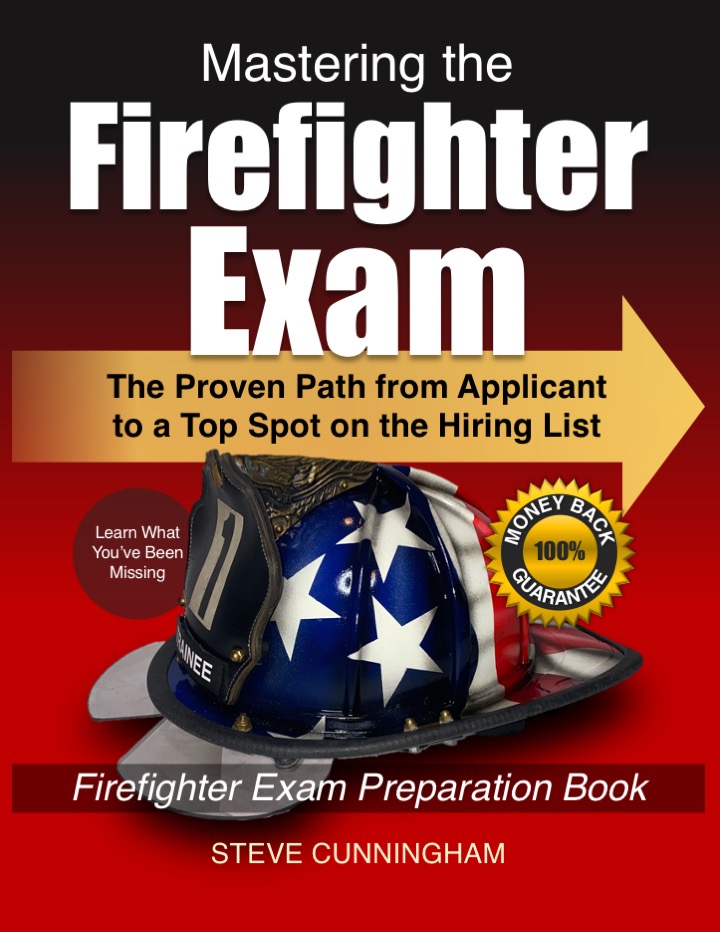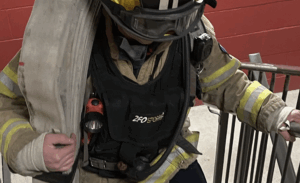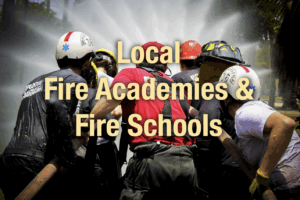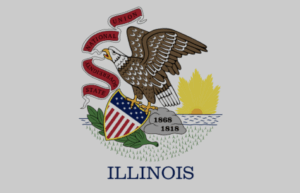Firefighter Situational Judgment Tests (SJTs) are critical in assessing aspiring firefighters, offering a window into their decision-making abilities and behavioral competencies in challenging scenarios. In firefighter exams, SJTs are designed to evaluate a candidate’s responses to realistic situations encountered on duty.
These tests hold immense significance in the selection process, aiming to gauge a candidate’s capacity to navigate complex situations, make sound judgments, and exhibit the behavioral attributes essential for effective firefighting. This comprehensive guide aims to shed light on the nature of SJTs within firefighter exams, elucidating their purpose, evaluating the importance of these tests in assessing firefighter candidates, and providing a detailed overview of the topics to be covered.
This guide will delve into the structure, critical competencies assessed, strategies for excelling, common pitfalls to avoid, real-life scenarios, and resources for adequate preparation in Firefighter Situational Judgment Tests. Join us on this journey to unravel the intricacies and significance of SJTs in firefighting assessments.
Table of Contents
Understanding the Structure of Firefighter SJTs
Firefighter SJTs typically present candidates with scenarios they might encounter in the line of duty. These scenarios range from critical incidents to routine challenges, testing decision-making under pressure. Candidates are then asked to choose the most and least effective actions or rank options according to their appropriateness in the given context.
Breakdown of Common Types of Situational Judgment Test Questions
- Ranking Questions: Candidates are required to order a set of actions based on their perceived effectiveness or appropriateness in addressing a given scenario.
- Selection Questions: Candidates must select the “most or least” practical course of action.
- Response Rating Questions: Candidates are asked to rate the effectiveness of various responses to a given situation.
Sample Questions and How They Are Assessed
#1 Sample “Ranking” Questions
Scenario 1: Structure Fire Response
Rank the following actions in order of priority based on their effectiveness in handling a structure fire incident:
- Identify the location and severity of the fire.
- Establish communication with the incident command.
- Begin immediate evacuation of occupants.
- Initiate primary search and rescue operations.
Assessment: Correct Sequence: 1, 2, 4, 3
- Rationale: Identifying the fire’s location and severity is critical for effective decision-making. Once assessed, establishing communication with the incident command helps coordinate efforts. Following this, initiating primary search and rescue operations before evacuating occupants prioritizes rescue and containment before evacuation.
Scenario 2: Vehicle Extrication Procedure
Rank the following actions in order of their priority when responding to a vehicle entrapment incident:
- Stabilize the vehicle to prevent shifting.
- Assess the condition of the entrapped individuals.
- Call for additional specialized assistance.
- Begin initial extrication procedures.
Assessment: Correct Sequence: 2, 1, 4, 3
- Rationale: Assessing the condition of entrapped individuals is the initial step for effective rescue. Stabilizing the vehicle follows to ensure safety. Beginning extrication procedures, once stable, precedes calling for specialized assistance.
Scenario 3: Hazmat Incident Response
Rank the following actions in order of priority for managing a hazardous materials spill:
- Establishing a perimeter and restricting access.
- Identifying the type and extent of the hazardous material.
- Calling for specialized hazmat response units.
- Providing immediate medical attention to affected individuals.
Assessment: Correct Sequence: 2, 1, 3, 4
- Rationale: Identifying the hazardous material assists in implementing appropriate containment measures. Establishing a perimeter and calling for specialized response units is crucial to ensure safety and proper handling before providing medical attention.
These sample questions illustrate the format of ranking questions in firefighter situational judgment tests and highlight the importance of assessing and prioritizing actions in various emergency scenarios.
#2 Sample “Selection” Questions
Scenario 1: Fire Rescue Prioritization
Select the MOST effective action in managing a residential fire incident:
- Raising a ladder to access a higher floor window.
- Directing occupants to evacuate immediately.
- Connecting the hose to initiate fire suppression.
- Conducting a secondary search for missing occupants.
Assessment: Correct Answer: 2
- Rationale: Directing occupants to evacuate immediately is the most effective immediate action to ensure their safety before addressing the fire directly or conducting secondary searches.
Scenario 2: Vehicle Collision Response
Select the LEAST effective action in handling a vehicle collision with multiple injuries:
- Providing immediate medical care to conscious individuals.
- Assisting in securing the scene to prevent further accidents.
- Moving injured individuals away from the collision site.
- Alerting emergency medical services for immediate response.
Assessment: Correct Answer: 3
- Rationale: Moving injured individuals away from the collision site can aggravate injuries and is generally discouraged before a proper medical assessment or professional aid arrives.
Scenario 3: Hazardous Material Exposure
Select the MOST effective action in responding to a hazardous material exposure incident:
- Rinsing affected skin areas thoroughly with water.
- Moving affected individuals to a well-ventilated area.
- Gathering information on the nature of the hazardous material.
- Administering antidotes or first aid treatment.
Assessment: Correct Answer: 3
- Rationale: Gathering information on the nature of the hazardous material is crucial for appropriate and targeted response measures before initiating treatment or moving individuals.
These sample questions demonstrate the nature of selection questions in firefighter situational judgment tests. Candidates must choose the most or least effective action among several options, assessing their ability to make informed decisions in emergencies.
#3 Sample Response Rating Questions
Scenario 1: Fire Evacuation Protocol
Rate the effectiveness of the following responses in managing a building evacuation during a fire incident, 1 being what you would do first, followed by 2 for your second and 3 for your last choice:
- Issuing clear and concise evacuation instructions.
- Assisting individuals with mobility issues in exiting the building.
- Initiating the use of fire suppression equipment.
Correct Response Rating:
- 1st choice
- 2nd choice
- 3rd choice
- Rationale: Issuing clear evacuation instructions ranks the highest as it ensures everyone’s understanding and cooperation. Assisting those with mobility issues follows closely, ensuring no one is left behind. Initiating fire suppression, although important, ranks lower in priority during an evacuation.
Scenario 2: Medical Emergency Response
Rate the effectiveness of the following actions in responding to a medical emergency, 1 being what you would do first, followed by 2 for your second and 3 for your last choice:
- Communicating vital patient information to arriving EMS personnel.
- Providing immediate basic life support to the patient.
- Securing the scene to prevent further hazards.
Correct Response Rating:
- 2nd choice
- 1st choice
- 3rd choice
- Rationale: Providing immediate basic life support to the patient ranks highest in urgency and priority. Communicating patient information to arriving EMS personnel follows as it aids in a seamless transition of care. Securing the scene, though necessary, is rated lower in urgency.
Scenario 3: Hazardous Material Identification
Rate the effectiveness of the following responses in identifying a hazardous material, 1 being what you would do first, followed by 2 for your second and 3 for your last choice:
- Consulting material safety data sheets (MSDS) for possible matches.
- Conducting on-site visual and olfactory assessment.
- Seeking guidance from specialized hazmat response teams.
Correct Response Rating:
- 2nd choice
- 3rd choice
- 1st choice
- Rationale: Seeking guidance from specialized hazmat response teams is rated highest for accuracy and safety. Consulting MSDS follows for initial information. Conducting on-site assessment ranks lower, as it poses potential risks without expertise.
If you want practice tests, visit our comprehensive blog page, Online Firefighter Written Test Prep Material. There, you’ll find a curated collection of valuable links to practice tests, recommended books, and interactive tools to equip you.
These questions demonstrate the response rating format in Firefighter Situational Judgment Tests, requiring candidates to assess the effectiveness of various actions in emergencies.
Key Skills Evaluated in Firefighter SJTs
1. Analysis of Core Competencies Assessed in SJTs:
- Decision-making: Firefighter SJTs assess an individual’s ability to make prompt and effective decisions in high-pressure situations, weighing options to determine the best action.
- Problem-solving: Evaluates a candidate’s capacity to quickly assess problems, analyze information, and devise efficient solutions, which is crucial for addressing emergency scenarios effectively.
- Ethics: Measures ethical judgment and adherence to professional standards, evaluating candidates’ responses in morally challenging situations, emphasizing integrity and compliance.
2. Importance of Behavioral Competencies for Firefighters:
Behavioral competencies, pivotal for firefighters, are crucially assessed in SJTs due to their significance in the field:
- Adaptability: Ability to swiftly adjust to changing conditions, essential in unpredictable emergencies.
- Teamwork: Evaluates collaboration skills vital for effective coordination within a team during emergency response.
- Communication: Assessing practical communication skills under pressure is crucial for conveying critical information accurately.
3. Real-Life Situations Mirrored in SJTs and Their Significance:
Firefighter SJTs often simulate real-life scenarios encountered on the job, emphasizing:
- Emergency Response Scenarios: Mirrors in actual firefighting situations, allowing candidates to showcase their response aptitude.
- Safety Protocols: Evaluates adherence to safety protocols in various hazardous situations.
- Humanitarian Approach: Assesses candidates’ ability to balance the urgency of response with compassion towards affected individuals.
In summary, firefighter SJTs comprehensively evaluate candidates’ cognitive abilities, behavioral competencies, and adaptability in simulated emergencies, ensuring they possess the necessary skills and mindset for influential firefighting roles.
Ready to Pass the Test and get Hired?
Mastering the Firefighter Exam is a complete guide on how to pass the firefighter exam with a top score. It simplifies the complicated hiring practices of big city fire departments and reveals insider information most candidates don’t know about.
If You Would Like To Know How To Get A Head Of Your Competition, This Book Is For You.
Strategies for Excelling in Firefighter SJTs
Preparation Techniques for SJTs
Practice and Resources: Engage in regular practice using firefighter-specific SJT materials and resources available online. Utilize mock tests, sample questions, and study guides to familiarize yourself with the format and types of scenarios presented.
Practical Approaches to Tackling Situational Judgment Test Questions
- Understanding the Context: Carefully read and comprehend the scenario presented, focusing on the situation’s nuances and details before jumping into the responses.
- Prioritize Responses: Evaluate and rank responses based on their effectiveness, considering the immediate needs of the scenario and the ethical considerations involved.
Time Management Tips for SJTs
- Allocate Time Wisely: Avoid spending excessive time on any single question. Allocate a set amount of time per scenario to ensure you complete the test within the given timeframe.
- Avoid Overthinking: Trust your initial instincts and avoid overanalyzing responses. Quickly assess and choose the most appropriate action based on the provided information.
By implementing these strategies, candidates can effectively prepare for firefighter SJTs, clearly navigate the scenarios, and manage their time efficiently to excel in these situational judgment tests.
Common Mistakes and Pitfalls to Avoid in Firefighter SJTs
Analysis of Mistakes Typically Made in SJTs
- Rushing Through Responses: Choosing responses without thoroughly assessing all options may result in selecting less effective solutions.
- Overemphasis on Personal Biases: Allowing personal opinions or biases to influence responses can lead to choosing options based on preference rather than effectiveness.
- Neglecting Ethical Considerations: Overlooking ethical implications in scenarios might result in choosing actions that compromise integrity.
How to Recognize and Prevent Common Errors
- Comprehensive Scenario Evaluation: Understand each scenario fully, identifying key details and considering the broader context before selecting a response.
- Objective Assessment: Evaluate responses objectively, prioritizing actions based on their effectiveness in addressing the scenario’s immediate needs rather than personal inclinations.
- Adherence to Professional Ethics: Consider ethical implications in each situation and ensure selected responses align with ethical standards expected in firefighting roles.
Tips for Avoiding Traps in SJT Questions
- Read Questions Thoroughly: Carefully read and understand the question stem and response options before choosing.
- Consider All Alternatives: Assess all available response options, considering each choice’s immediate and long-term implications.
- Stay Focused on the Scenario: Avoid getting distracted by unrelated details and focus on the scenario’s core elements and requirements.
By recognizing these common errors and implementing strategies to prevent them, candidates can navigate Firefighter SJTs more effectively, ensuring their responses align with the required competencies and standards.
Resources and Additional Preparation Materials for Firefighter SJTs
1. Recommended Books, Websites, and Practice Tests for SJT Preparation:
- Books: Explore firefighter-specific SJT preparation guides and books authored by experts in the field. Look for titles offering comprehensive practice scenarios and detailed strategies for mastering SJTs.
- Websites: Access reputable websites offering firefighter-specific SJT practice tests, sample questions, and study materials. Look for platforms with updated content and credible sources.
- Practice Tests: Utilize firefighter SJT practice tests available in books or online resources. Regularly engaging with varied scenarios will enhance familiarity with different types of questions.
2. Online Resources and Tools for Enhancing SJT Skills:
- Interactive Websites: Engage with interactive platforms offering SJT-focused training, allowing users to simulate real-life scenarios and receive immediate feedback on their responses.
- Skill-Building Tools: Explore online tools dedicated to developing specific competencies evaluated in SJTs, such as decision-making or ethical reasoning, through targeted exercises and simulations.
3. Accessible Practice Materials for Aspiring Firefighters:
- Free Resources: Seek out free SJT practice materials on reputable websites or firefighter forums. These resources often offer a range of practice scenarios suitable for aspiring firefighters at varying stages of preparation.
- Community Forums: Join firefighter forums or communities where candidates share insights, experiences, and resources related to SJT preparation. Engaging with peers can provide valuable guidance and support.
For a more expansive array of resources encompassing various test types and preparation techniques, including SJTs and other assessments, visit our comprehensive blog page titled Online Firefighter Written Test Prep Material. There, you’ll find a curated collection of valuable links to practice tests, recommended books, and interactive tools to equip aspiring firefighters with the skills and knowledge needed to excel in their examinations.
Accessing diverse resources like recommended books, interactive websites, and online tools tailored for SJT preparation can significantly enhance a candidate’s readiness for firefighter SJTs, providing comprehensive practice and skill-building opportunities.
Conclusion
Firefighter Situational Judgment Tests (SJTs) are crucial assessments evaluating decision-making, problem-solving, and ethical reasoning skills essential for firefighting roles. Throughout this guide, we’ve emphasized the significance of SJTs in assessing core competencies vital for success in firefighting. Understanding common pitfalls, preparing diligently, and practicing varied scenarios are key steps for aspiring firefighters to excel in these assessments. By comprehensively preparing for SJTs, candidates improve their chances of success and equip themselves with essential skills to serve as effective firefighters in their communities.
<a href=”https://www.firefighter-test.com/affiliates/idevaffiliate.php?id=122_0_1_6″ target=”_blank”><img style=”border:0px” src=”https://www.firefighter-test.com/affiliates/media/banners/b_horizontal1.png” width=”936″ height=”120″ alt=”Firefighter test prep”></a>









